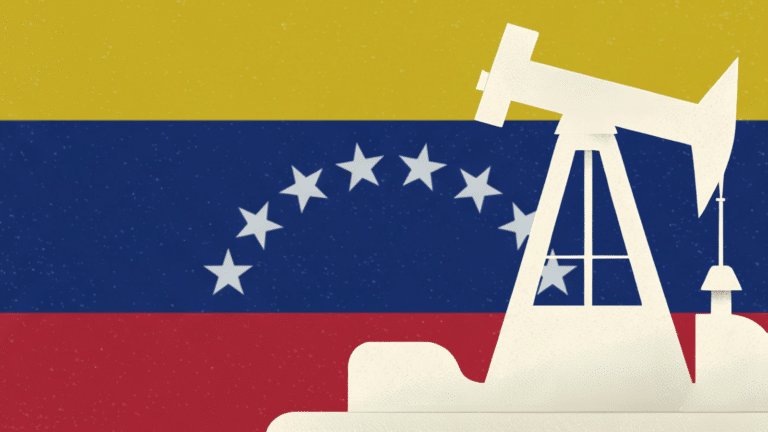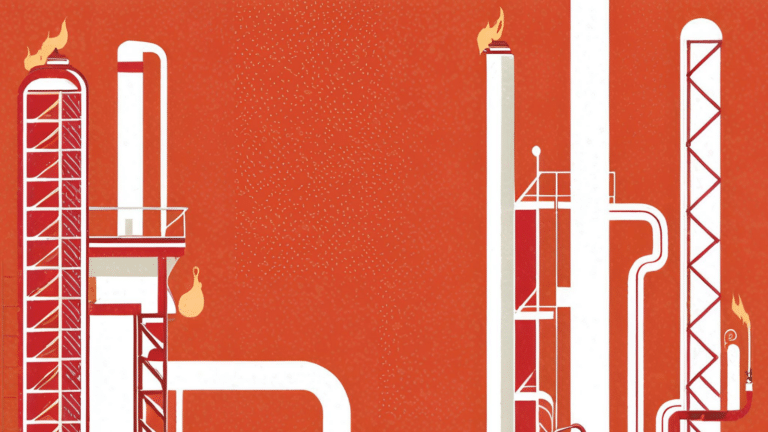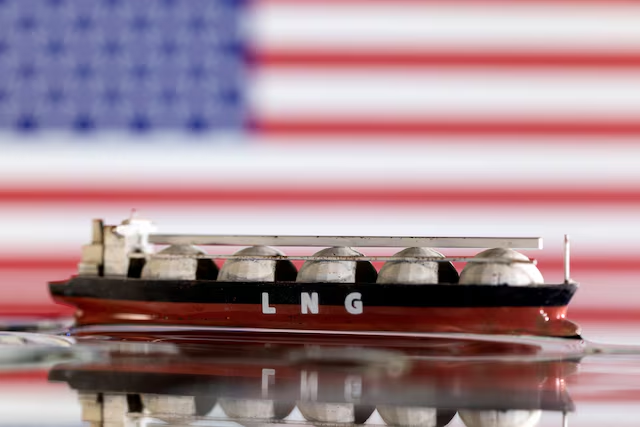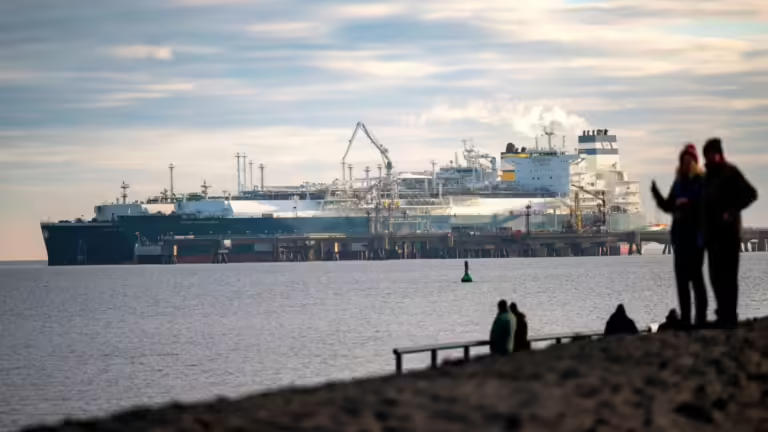China Halts U.S. LNG Imports Amid Tariff War
China has ceased importing liquefied natural gas from the United States since early February, as the ongoing tariff war impacts energy trade.
Current Access Level “I” – ID Only: CUID holders, alumni, and approved guests only
Insights from the Center on Global Energy Policy
This Energy Explained post represents the research and views of the author. It does not necessarily represent the views of the Center on Global Energy Policy. The piece may be subject to further revision. Contributions to SIPA for the benefit of CGEP are general use gifts, which gives the Center discretion in how it allocates these funds. Rare cases of sponsored projects are clearly indicated.
For a full list of financial supporters of the Center on Global Energy Policy at Columbia University SIPA, please visit our website at Our Partners. See below a list of members that are currently in CGEP’s Visionary Circle. This list is updated periodically.
Over the past few decades, liquified natural gas (LNG) trade has evolved from the initial point-to-point business model of the 1960s to become more flexible. This shift was supported by the rise of portfolio players and the liberalization of the European gas market in the 2000s, as well as the emergence of the United States as a destination-flexible LNG supplier. This increased flexibility allowed European countries to replace the shortfall of Russian pipeline gas in 2022 and has also enabled various LNG market players to optimize their operations by redirecting LNG cargoes based on market signals. However, various geopolitical, market, and regulatory developments could diminish these attributes.
This blog post highlights four factors that could profoundly impact LNG’s ability to fulfill its role as a security of supply tool as well as the LNG trading strategies of companies: US-China trade tensions, EU decisions on Russian LNG imports, EU methane regulation enforcement, and Qatar’s strained relations with some buyers.
In 2019, as trade tensions between the United States and China escalated during the first Trump administration, China retaliated by imposing tariffs on US LNG. This led to China halting imports of US LNG for about one year. The countries then resumed LNG trade shortly after they signed an historic and enforceable agreement on a Phase One trade deal on January 15, 2020.
In February 2025, the Trump administration imposed a 10 percent tariff on all Chinese imports into the United States. China responded by announcing tariffs on US imports, including a 15 percent tariff on US LNG starting on February 10. With 6 billion cubic meters (bcm) of US LNG imported by China in 2024, out of a total 107 bcm of LNG imported by China and 114 bcm exported by the US, the two countries are not significantly dependent on each other. Still, China has not imported any US LNG cargoes since February 6, as these cargoes are now being diverted to Europe.
A tit-for-tat tariff escalation between the countries has resulted in US tariffs reaching 145% and Chinese tariffs reaching 125% as of mid-April. These high tariffs have made it economically unfeasible for Chinese buyers to import contracted US LNG.
However, the stakes will be much higher once US LNG facilities, from which Chinese companies have contracted LNG, begin to come online over the next four years. Including existing contracts, this would represent 25 bcm of contracted LNG that would need to be redirected to other markets if Chinese tariffs remain in place. That would represent about 10 percent of the capacity of US LNG projects existing and under construction. Redirecting these volumes could make the market less efficient, even though one could argue that shipping US LNG to the EU instead of China is logistically easier. Finally, this second round of trade tensions is likely to have a long-term impact on Chinese importers’ willingness to enter into additional US LNG contracts.
The EU has been importing increasing volumes of Russian LNG since 2022, totaling 19 bcm in 2024. The majority of these supplies come from Yamal LNG, with which several European companies have long-term contracts, as well as from two smaller LNG projects, Portovaya and Vysotsk. The proximity of Yamal LNG to European ports coupled with high European gas prices explain why Russian LNG has predominantly been directed to Europe.
However, US sanctions caused operations at Portovaya and Vysotsk to cease in February 2025. As a result, European imports of Russian LNG are expected to decline this year.
Although the EU has not yet banned Russian LNG imports, it has prohibited the transshipment of Russian LNG to non-European destinations as of late March 2025. As the war between Ukraine and Russia enters its fourth year, there have been increasing calls from various European countries to impose a ban on Russian LNG. The European Commission is expected to release a roadmap for phasing out Russian gas imports in early May, and, absent a ceasefire, it seems highly likely that Russian LNG will be banned by 2027 at the latest, once global gas markets have rebalanced and Europe’s gas supply security is assured. This timeline could change if a global peace agreement regarding Ukraine includes provisions for the continuation of these imports.
Another challenge facing global LNG markets is the European Union’s methane regulation, adopted in August 2024. Notably, the EU plans to introduce “maximum methane intensity values” allowed for fossil fuels—including LNG—imported into Europe by 2030. Although annual reporting is set to begin in May 2025, significant uncertainty remains regarding how the regulation will be enforced, particularly in obtaining producer-level emissions data. Nevertheless, it is increasingly likely that the regulation will create a divide between “clean” and “dirty” LNG supplying the European market.
Accurately tracking methane emissions is especially difficult in the United States, where LNG exports are sourced from a wide variety of gas fields. Recent regulatory developments further complicate the picture. In February 2025, the US Senate repealed the methane fee on excessive fugitive emissions, and on March 12 the Environmental Protection Agency rolled back several environmental regulations during what was dubbed a “day of deregulation.” These actions suggest a growing regulatory divergence between the EU and the US.
While many US gas producers and LNG exporters have supported keeping strong methane regulations, it remains uncertain how the US and EU will navigate differences in requirements—particularly in the context of ongoing trade tensions. Importantly, the US may not be the only country at risk of falling into the “dirty” LNG category; other LNG suppliers could also struggle to meet the EU’s evolving standards.
Qatar, the world’s second-largest LNG supplier, is set to maintain its position thanks to the massive expansion of its export capacity—an additional 85 bcm per year is currently under construction. While a significant portion of this new capacity remains uncontracted, Qatar has increasingly pushed for destination clauses, which restrict the resale or redirection of its LNG, in its negotiations with potential buyers. This stance has strained relations with some of its traditional markets, notably Japan. After Japan’s top power company, JERA, chose not to renew expiring contracts in 2021, Japanese LNG imports from Qatar declined sharply—from 14 bcm in 2018 to roughly 4 bcm in 2024.
Tensions have also emerged with the European Union. Qatar has threatened to suspend LNG exports to EU member states if QatarEnergy is penalized under the bloc’s Corporate Sustainability Due Diligence Directive, which requires large EU and non-EU companies operating in the EU to check supply chains for use of forced labor or environmental damage. Over the past three years, EU imports of Qatari LNG have ranged between 13 and 17 bcm annually.
Qatar will have to decide how it will deal with its significant amount of additional uncontracted supply that will increase at the same time as a record amount of LNG comes to the market from other countries likewise expanding production.
Each of these factors alone could reduce the efficiency of global LNG trade; combined, they may have a much greater impact. Geopolitical fragmentation is spilling over into LNG trade, with some countries ceasing to trade with one another. These developments run counter to the growing volume of LNG contracted by majors and traders seeking to benefit from the increased flexibility of the global LNG market, as well as by end-users who have become more accustomed to that flexibility.
CGEP’s Visionary Circle
Corporate Partnerships
Occidental Petroleum
Tellurian
Foundations and Individual Donors
Anonymous
Anonymous
Aphorism Foundation
the bedari collective
Children’s Investment Fund Foundation
David Leuschen
Mike and Soa Segal
Kimberly and Scott Sheffield
Bernard and Anne Spitzer Charitable Trust
Ray Rothrock
This Energy Explained post represents the research and views of the author. It does not necessarily represent the views of the Center on Global Energy Policy. The piece...

This Energy Explained post represents the research and views of the author. It does not necessarily represent the views of the Center on Global Energy Policy. The piece...

This Energy Explained post represents the research and views of the author. It does not necessarily represent the views of the Center on Global Energy Policy. The piece...

This Energy Explained post represents the research and views of the author. It does not necessarily represent the views of the Center on Global Energy Policy. The piece...


Can U.S. gas exports throw a lifeline to Europe without raising prices at home?

Incoming administration’s policies might eventually lead to decrease in US LNG exports to EU
